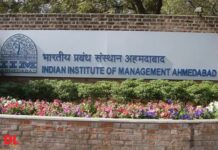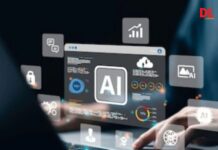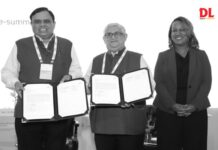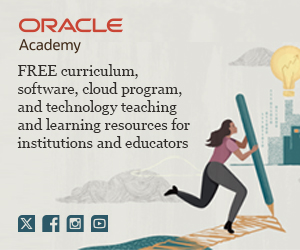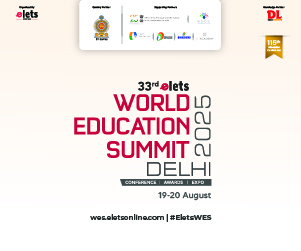The UN meaning of the Information Society emphasises information opportunities as inalienable rights of each. The participants of the second phase of the World Summit on the Information Society (Tunis, November 2005) reaffirmed “the desire and commitment to build a people-centred, inclusive and development-oriented Information Society, premised on the purposes and principles of the Charter of the United Nations, international law and multilateralism, and respecting fully and upholding the Universal Declaration of Human Rights, so that people everywhere can create, access, utilise and share
information and knowledge, to achieve their full potential and to attain the internationally agreed development goals and objectives, including the Millennium Development Goals”. The Information Society is a society
where the main production, communication and other processes take place in the virtual environment. Such virtualisation of the real world results in the fact that knowledge about “the ideas” becomes much more important than practical realisation of the ideas which becomes a routine due to the progress
in technologies. The Information Society is not only a theoretical investigation of armchair scientists but it is phenomenal and today one may observe its existing shoots in some mass phenomena. First, we mean open projects and free
(independent) communities developing in the Internet environment. These communities (still) take very modest practical aims but their activities omprise
something common which, being extrapolated to wider community (up to whole society) makes it possible to perceive the other world, other interactions, other laws and other roductiveness. Along with the development of such projects and extend of the fields of their implementation principally new methodology has emerged. This methodology looks for and gradually
detects the techniques and modes of co-organisation of people in the communities based on creation nd dissemination of knowledge, information and products of creative activities.
The term “open content” is (still) used in almost the same sense in the UNESCO documents, but here the word “open” has an additional nuance corresponding the organisation’s spirit and means not only the open regime but also the principle of openness and availability of knowledge, information and works of art, which UNESCO advocates
The Approaches to the Definition of Open Content In the narrow sense, open content means digital content under the specific (open) regime of using, which
is usually regulated by the special open license for dissemination of content. This empirically narrow operational definition of open content is widely used now and appeared due to the joining to the regime of production and dissemination of open software for other digital products such as texts, music, video, images and combined products united by the term “multimedia”.
The term “open content” is (still) used in almost the same sense in the UNESCO documents, but here the word “open” has an additional nuance corresponding the Organisation’s spirit and means not only the open regime but also the
principle of openness and availability of knowledge, information and works of art, which UNESCO advocates. Nevertheless, it seems to us that the whole sense spectrum of open content could not be limited to the definitions mentioned above. The “content” means not only content in proper sense but also essence, substance, meaning and sense. By the way, an English word “content” succeeds in its sense to two different Latin words: “contentum” that means “something
existing inside” and “contentus” that means satisfaction and contentment (sic!).
The second part of the term, namely the word “open” comprises in its sense not only openness as availability and accessibility but also means something what was open, released, discovered as well as “open” in the sense analogues to
those used for “open systems”, namely open-ended, unaccomplished, unfinished and available for interactivity. Science as a part of culture is in
extreme need of junction of its separated and disaggregated parts into a single whole. There is a long history of dialog on the necessity of not only interdisciplinary research but also of joining science knowledge in a unified consistent environment and construction of a “Knowledge House” as well as on the need in combining of scientific, cultural and historical contexts and creation of common depository, common virtual memory of humankind. Apparently, this task must be one of the main challengers for the Knowledge
Society.
Open Content as a Methodology
In some works on gnoseology and science of science, the multifold correlation between the levels of social development and dominant methodologies has been realised. The transition to the next level of social development is accompanied by a paradigmatic transformation of methodology. Thus, the methodology corresponding to the industrial society is a classical methodology. Its formation was routed in methods and principles applied in natural science of those times, and so-call “classical picture of the universe” was shaped. The naturalists fondly believed that the dome of the science sky was shadowed only with a few cloudlets to be dispersed easily and shortly.
After that they anticipated completed picture of the universe basing on which it could be possible to use rather simple techniques for comprehensive realisation of necessary functions of description, prediction and post-diction.
But later it’s come clear that an attempt to remove even one cloudlet from the dome of the science sky leads to the necessity to study microcosm where the principles of classical methodology occurred to be inadequate, e.g. there is no possibility to measure with every required degree of accuracy and some measured values are interdependent. The perception of such results led to the
formation of so-called non-classical paradigm of methodology evolution, and meanwhile the society entered a consumer phase of its development. Along with the syntax and semantic elements of analysis the pragmatic elements have emerged. It has become clear that an integrated picture of the universe could not be shaped when taking into account the existence only of the macrocosm and microcosm and not considering the presence of the world of information.
Thus, we have several pairs: industrial society and classical methodology as well as consumer society and nonclassical methodology. Although the rinciples and methods of post-non-classical science has been accepted by the intellectual community and recognised as scientific thinking, our societies,
economics, political systems, social and public institutions, including mass education, are still based on non-classical and even classical picture of the universe. As a result, there are examples of failed attempts to inculcate modern methods into mass education, namely methods of personalised learning, structuring of personal learning environments and tracks basing on e-learning.
Modern societies face relatively new phenomenon, namely cognitive divide, which was emphasised at the International conference “UNESCO between Two Phases of the World Summit on the Information Society”. While the digital divide means segregation according to the access to digital facilities, the cognitive divide consists of inequality in formed basic competences and hinking skills, which allow or disallow an individual to participate on equal terms in information, scientific and creative activities. The eradication of the
cognitive divide requires the cardinal reconstruction of mass education system, and the postnon- classical methodology should be laid at its basis. This is an urgent task as education system, unlike industrial and services sectors,
operates for future, and the future is Knowledge Societies.
Manifestations of Open Content
The methodology of open content is a methodology based on the principle of uneliminability of a Subject (as an “inner cause”, i.e. subjective sense) from any process. This post-nonclassical methodology is efficacious and applicable to the most of known productive and social processes. It proved to be efficient and meaningful at global and local levels and handling to the needs of an individual and communities of every extent scaled up to humankind.
We are going to extract from the different projects taking place in various countries and fields of activities and social communication the essential common features and find out main driving forces and mechanisms. The following should be underscored:
1. The open content projects are set up for solving of definite problems. The specific goal of a project may be refined but initially in must be defined in
terms of product (result) and not of process.
2. The goal of a project should be not only very definite but also socially sound. The more significant goal the more resources, attention and energy of the participants it may attract. The goal should be generous and ethically sound. The explicit formulation of the goal is directly related to accumulation of energy and motivation of the participants. When the goal is degraded, the motivation is also degraded, and the prospects of success of the project and
effectiveness are decreased.
3. Ideally, the open content projects have no need in any hierarchies
for the project management or attaining the result, even in the form of some experts’ institute. The net model works due to the fact that there is a limited number of possible rational reasons (ideas, decisions, hypotheses)
while the number of the participants in the project is unlimited (possibly all habitants of the Earth). In this case a full set of hypotheses is guaranteed, and the choice of the best one becomes simply a math task, according to the theory of taking decisions. In real life, the need in some hierarchy may happen but it
should be situational. The excess of rights over necessary level causes inequity of the participants unfavorable for motivation and frightening adherents away.
4. Development of the open content projects on major problems allows ccumulation of social energy and canalising it in line with the most important social tendencies as far as such a model of social activities play at the
same time a role of an organisational mode of social discourse. A decision taken through social discourse are collective, they are carefully considered by all stakeholders and at once the fact of collective decision-making generates
collective responsibility for its implementation and mechanism for mplementation. Thus, knowledge immediately becomes an action and the divide between thoughtful but futile discussions and thoughtless actions
disappears (in particular, the conflict between competent science and working
government). Being laid at the basis of new postnon- classical social and production institutions, the open content methodology is capable to reorganise the society in a way making the global community able to meet adequately the challenges of globalisation, cope with severe crisis situations resided in modern world, e.g. poverty, inequity, global diseases, ecological problems and other disasters putting humankind on the verge of survival.


